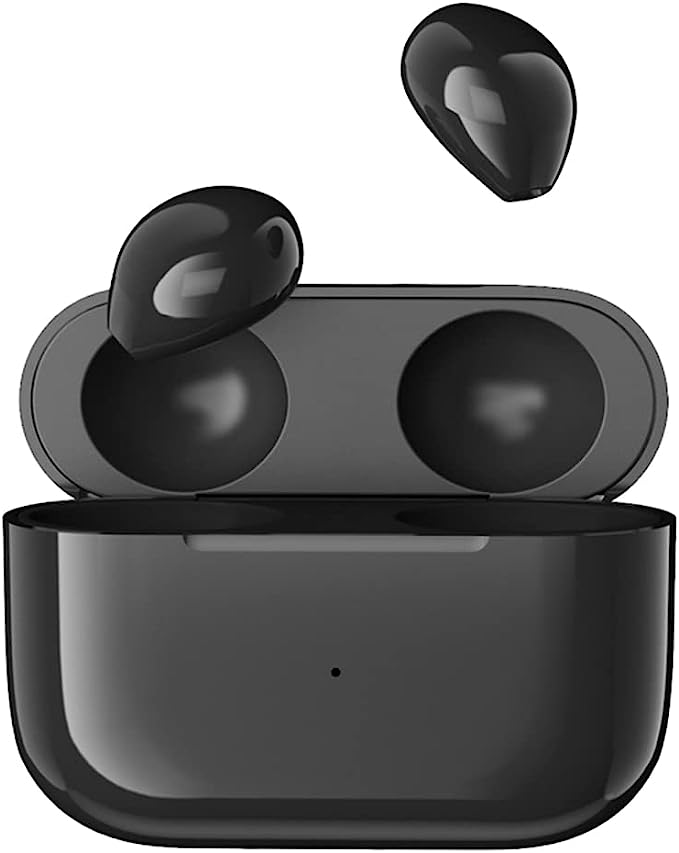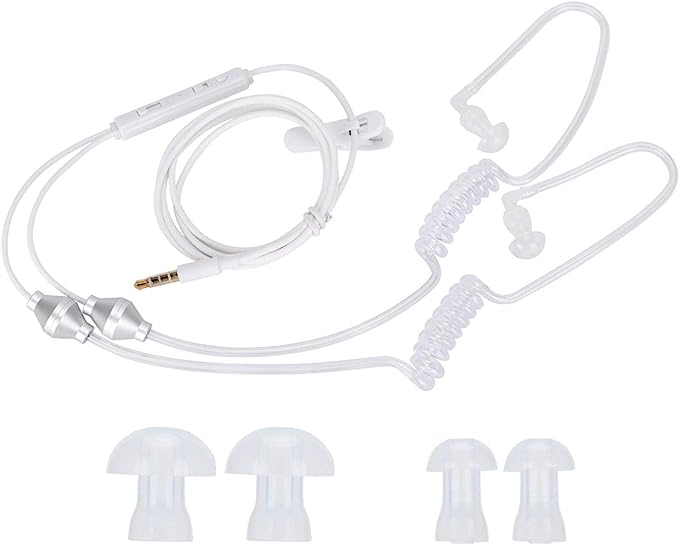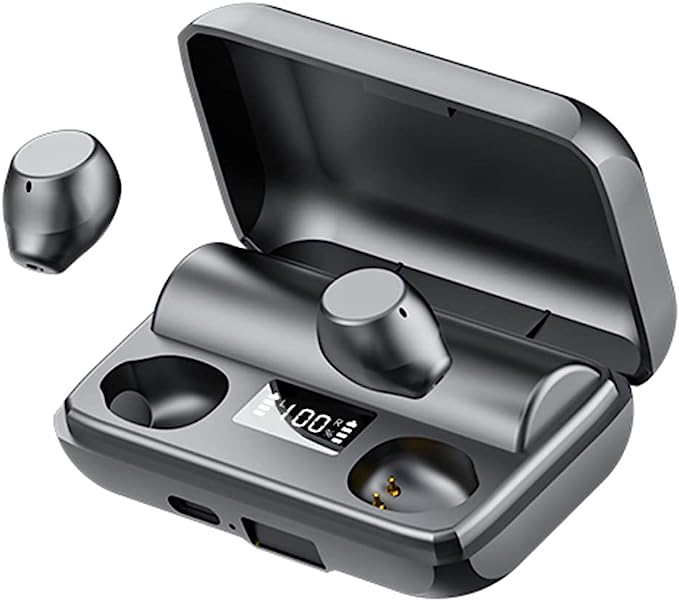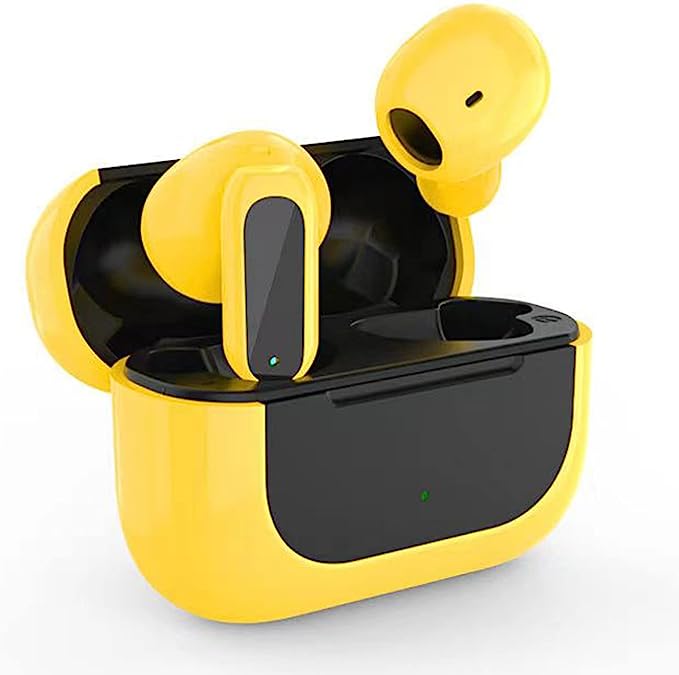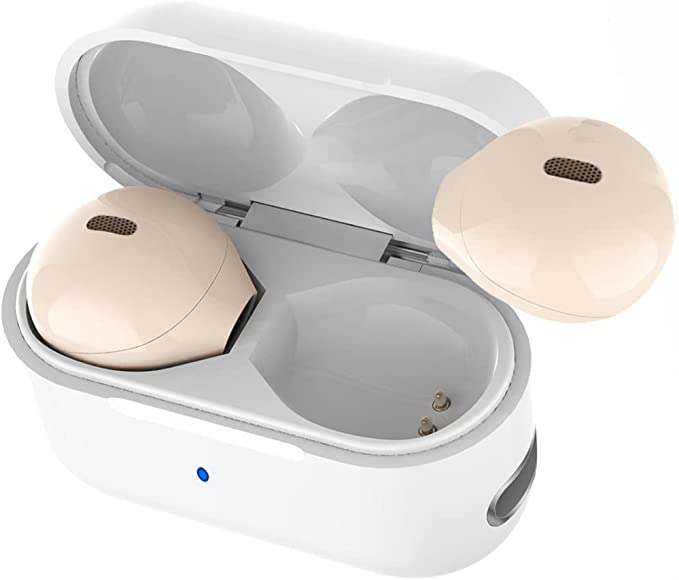The Art of Subtraction: Decoding the "Invisible" Earbud for Side Sleepers
Update on Nov. 14, 2025, 10:51 a.m.
In the crowded world of audio, we are trained to demand more: more battery, more features, more bass. But for one specific, desperate group of users—side sleepers—“more” is the enemy.
For a side sleeper, a standard earbud is an instrument of torture. It protrudes, creating painful pressure against the ear. It has “smart” touch controls that accidentally pause your white noise when you adjust your pillow. And, most cruelly, it has a “helpful” voice alert that wakes you up at 3 AM to announce “RECHARGE BATTERY.”
This is the problem that the wedoking Smallest Invisible Sleep Earbuds are engineered to solve.
With a mixed 3.7-star rating from 458 reviews, this is clearly not a perfect product. But it is a masterpiece of “subtractive engineering”—a design philosophy where the removal of features is the most important feature of all.

The Core Features: A “Less is More” Philosophy
The wedoking earbuds are defined by what they don’t have. They are a direct response to the “journey for the perfect chef’s kiss earbuds for sleeping,” as one detailed reviewer (“AT”) put it.
1. No Touch Controls (A Feature, Not a Flaw)
Standard earbuds are plagued by “unintentional pause/play while sleeping on your side and hitting the button.” The wedoking buds solve this by having “None touch press.” There are no buttons or touch surfaces on the buds themselves. You control playback from your device. This engineering choice eliminates the primary source of accidental wake-ups.
2. No Low Battery Alert (The Real Innovation)
The second, and most critical, feature is “None low battery alert.” As the same reviewer noted about her $200 Jabra earbuds, they “consistently… wake me nightly with a voice saying ‘RECHARGE BATTERY’.” The wedoking buds will never do this. They will simply, and silently, die. For a light sleeper, this is not a bug; it is the single most important feature. “Not being awakened by a low battery warning has been wonderful,” she concluded.
The Physical Engineering: The 2.0-Gram, “Flat” Form Factor
This “invisible” software is paired with an invisible physical design. * The Problem: Standard earbuds (like PowerBeats or Anker) “protrude way too far out of the ear,” creating painful pressure points when a side sleeper’s head rests on a pillow. * The Solution: The wedoking earbuds are “Tiny Hidden Sleepbuds,” weighing just 2.0 grams (less than a paperclip) and measuring only 16.9mm at their longest. Their “flat” profile is specifically engineered to “disappear” in the ear canal, resting flush with the ear concha.
This is why, despite a 3.7-star overall rating, the “Comfort” metric is a high 4.0. Users state they are “Very comfortable earbud that completely ‘disappears’ in the ear canal. No pressure whatsoever when lying on the side.” For the target user, this is the only metric that matters.

The Inevitable Trade-Offs (Why It’s 3.7 Stars)
So, if this is the “perfect” sleep solution, why the mediocre 3.7-star rating? Because to achieve this extreme miniaturization (2.0g) and “featureless” design, the engineers had to make massive compromises in two key areas.
1. The Battery Life Compromise (The 4-Hour Night) * The Spec: The earbuds last only 4 hours on a single charge (the case provides 20 more). * The Reality: As reviewer “Paula Blackwell” (4 stars) put it, “Perfect for sleeping–even side sleepers!–and fit so snug you hardly notice them. Sadly… the battery life is not long enough to get you through the whole night (unless you only sleep 4 hours).” * The Physics: You cannot make a 2.0-gram earbud and give it an 8-hour battery. The physical space is not there. The designers sacrificed longevity for size.
2. The Connectivity Compromise (The Tiny Antenna) * The Reality: A flood of 3-star and 1-star reviews report “Major connectivity issues.” One user (“Special K”) notes, “the right side stops working first, and then the left.” * The Physics: An earbud’s Bluetooth antenna is microscopic and relies on your head not blocking the signal. In a 2.0-gram “invisible” bud, the antenna is tiny. This makes it highly susceptible to dropouts and pairing failures, especially as the small battery wears down.
Coda: A Tool for a Very Specific User
The wedoking Sleep Buds are not “good” earbuds in the traditional sense. Their 3.7-star sound quality is passable, their battery life is short, and their connectivity is a gamble.
They are, however, perhaps the only solution for a very specific, and very desperate, user: the light-sleeping side sleeper who is being tortured by their “smart” earbuds.
This product is a “4-star” solution only if your primary problem is pressure pain and nighttime audio alerts. As one reviewer (“AT”) concluded, “These Wedokings are definitely the best so far when it comes to size! … I would definitely pay more if these had actual ANC.” She, like many others, is willing to accept all the trade-offs (short battery, iffy connection) just to get an earbud that is small enough, and silent enough, to let her sleep.

